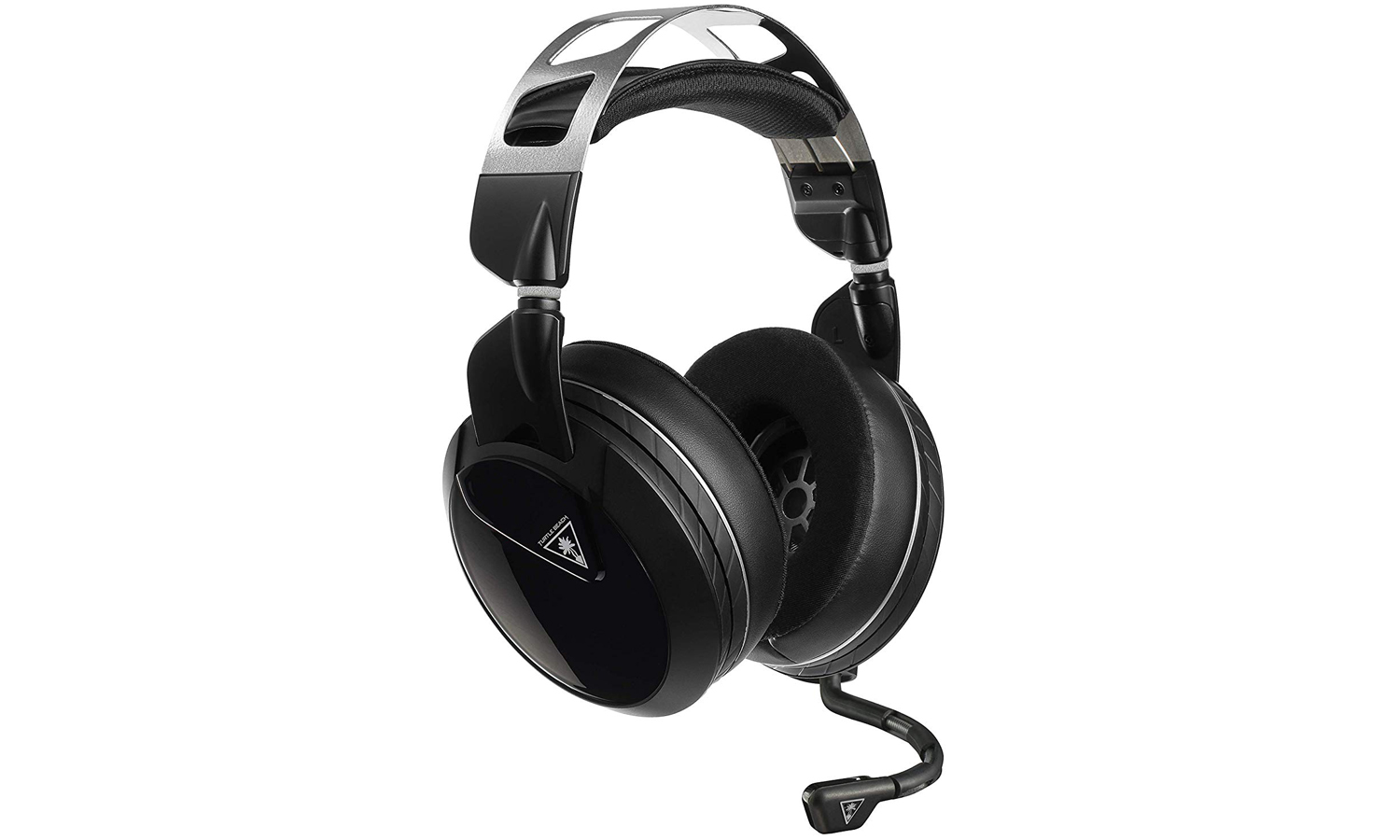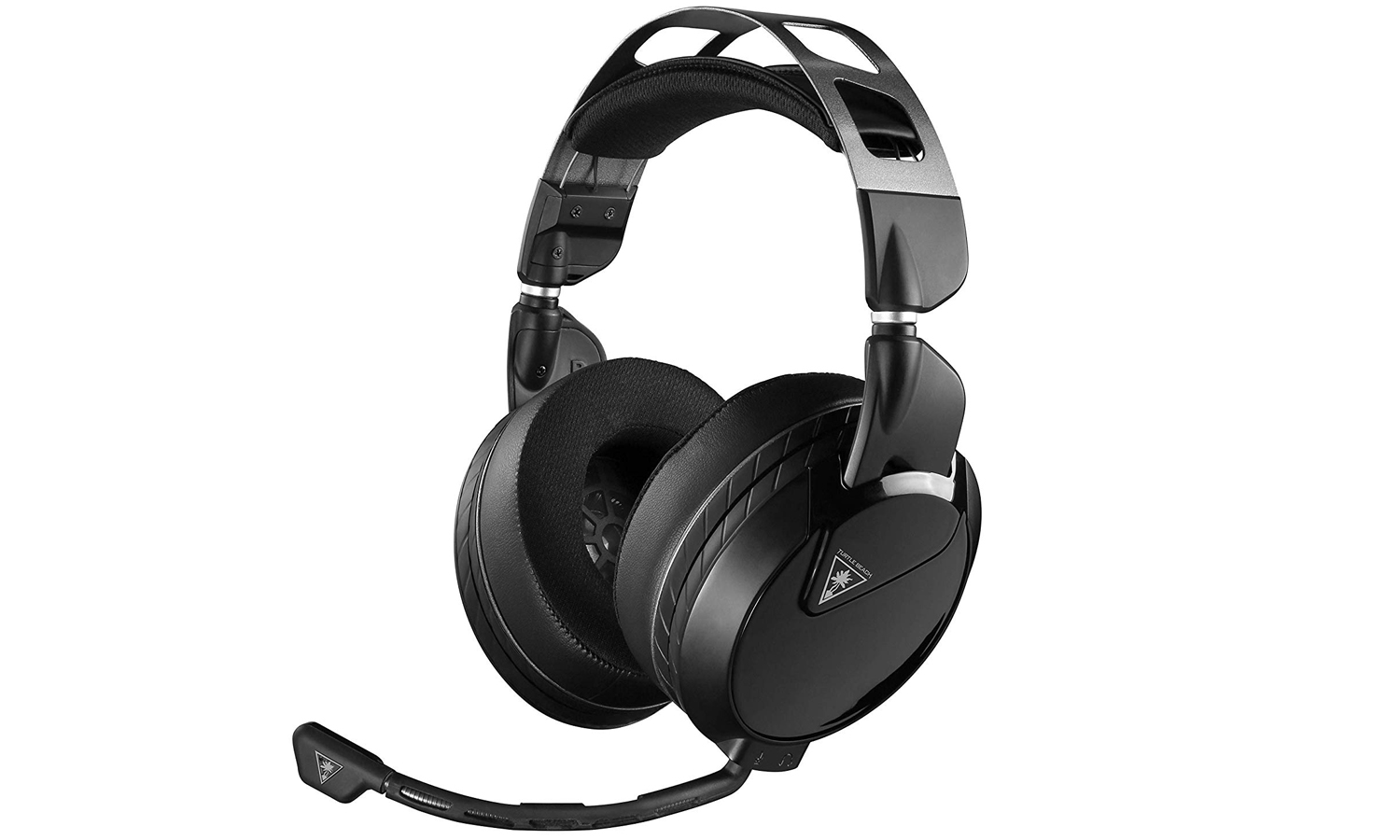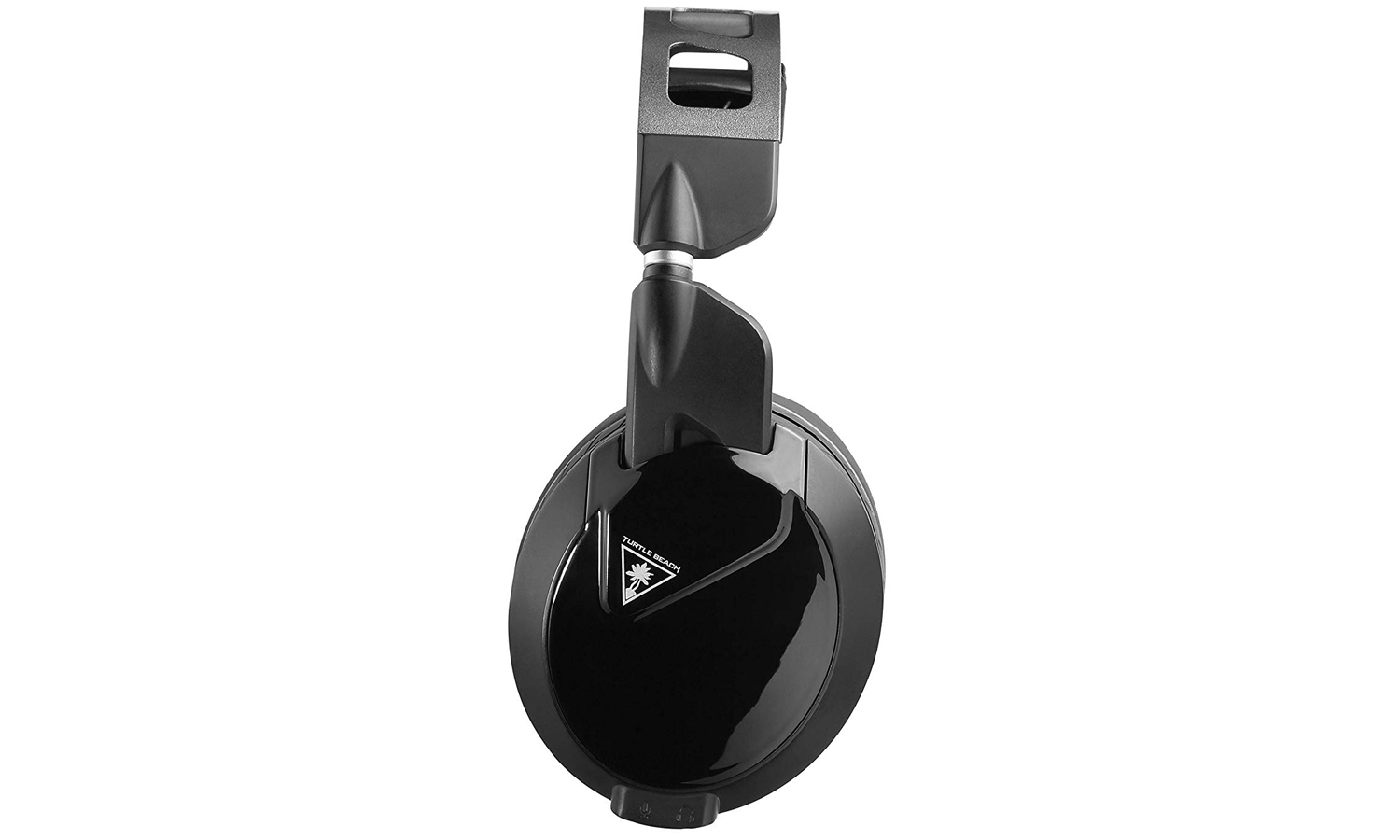Tom's Guide Verdict
The Turtle Beach Elite Atlas offers a solid sound, no-nonsense design and a reasonable price — no convoluted setup required.
Pros
- +
Excellent sound
- +
Attractive design
- +
Comfortable fit
- +
Versatile compatibility
Cons
- -
Indistinct volume controls
- -
Light on bass
Why you can trust Tom's Guide
Wireless headsets may be all the rage these days, but for versatility and cost efficiency, you just can't beat an old-fashioned wired model. That seems to be the philosophy behind the $100 Turtle Beach Elite Atlas headset, which delivers high-quality sound along with a comfortable fit and widespread compatibility.
If you want a top-of-the-line headset with a thousand bells and whistles, you'll have to look elsewhere. But if you want solid sound, no-nonsense design and a reasonable price, the Elite Atlas should fit the bill — no convoluted setup or ancillary software required.
Design
In the past, I've been tough on Turtle Beach for clinging to outdated designs. I won't make the same criticism about the Elite Atlas, though, which not only looks great, but also introduces a few helpful innovations.
First off, the Elite Atlas ditches the all-plastic chassis of previous models for a metal arch, with a padded, elastic headband beneath that. You can still adjust the fit by pushing and pulling the headband through a series of notches, but the rigid-arch/pliable-headband dynamic makes getting a comfortable fit much, much easier.
There are no controls on either of the two large, ovular ear cups. Instead, you attach a 3.5mm audio cable right next to the port for a 3.5mm, removable boom mic. Crowding these two attachments together was probably not a great idea, and a design that has to differentiate the two ends of the audio cable with a cumbersome "this end up" sticker isn't great, either.

The orientation of the audio cable is important, because the volume and chat-mix controls are on a little cylinder attached to the cable rather than on the ear cups. While there's nothing wrong with this in theory, it doesn't work that well in practice. The volume and chat-mix dials are identical; they look and also feel the same. Trying to change volume or chat mix on the fly takes some trial and error, especially because the cylinder is light and can spin around at a moment's notice.
"The Elite Atlas not only looks great, but also introduces a few helpful innovations."
You can either use the 3.5mm cable as a single entity or split it into audio/mic components with an included splitter cable. This is good for gaming PCs but also makes the cable extremely long. Using this cable at a gaming station, I constantly ran my chair over it by accident.
Get instant access to breaking news, the hottest reviews, great deals and helpful tips.
While the cabling is cumbersome, once you get it under control, it's worth it, because it's better to have a cable that's too long than one that's too short. The removable, flexible boom mic is attractive and durable. The magnetic, foam ear cups are easy to remove and clean, and you can even swap out ear-cup plates to change the headset's look. Overall, this is a big improvement over previous Turtle Beach designs.
Comfort
With big, plush, foam ear cups and a smart dual-headband system, the Elite Atlas feels great by default. But there's actually one more hidden feature that can make this headset even more comfortable for people with glasses: the ProSpecs Glasses Relief system. (The name's a bit of a mouthful, and most well-designed headsets aren't especially tough on bespectacled folks, but I appreciate the thought just the same.)

By removing the ear cup and adjusting a small strap, you can create an indentation in the foam large enough to accommodate your glasses — unless you're wearing truly prodigious, Elton-John-style specs, anyway. I thought the Elite Atlas was perfectly comfortable without the ProSpecs adjustment, to be honest, but the feature worked exactly as advertised, letting my glasses nestle right into the foam. I had no issues wearing the peripheral for hours at a time.
"With big, plush, foam ear cups and a smart dual-headband system, the Elite Atlas feels great by default."
Gaming Performance
Thanks to its 3.5mm audio connection, the Elite Atlas works with pretty much any system. Turtle Beach advertises the peripheral primarily as a PC headset, but the headset sounds gorgeous with PS4, Xbox One, Switch and mobile titles, too.

Even so, I spent most of my time with the device on a PC, testing it with titles like Overwatch, StarCraft: Remastered, World of Warcraft and Pathfinder: Kingmaker. The headset didn't favor one particular genre over the others, but I noticed that it handled music especially well in every game. The techno tunes of StarCraft pulsed with energy, just as the more orchestral fare in Pathfinder gave my adventure a suitably epic feel.
The directional sound for competitive titles like Overwatch was quite good as well — and the chat-volume mixer comes in handy here — but I could see the Elite Atlas being a good companion for immersive single-player games in particular. Whether I was fending off Romulans in Star Trek Online or turning in quests in World of Warcraft, there was a natural balance among voice work, sound effects and music.

Bass sounds solid, but my only issue with the Elite Atlas' soundscape is that the bass could be just a little more forward. Gunfire and explosions don't sound as immediate as they could, and you will hear them rather than feel them. To be fair, I'd much rather a gaming headset underemphasize bass than blast your eardrums out, but the Elite Atlas definitely favors higher frequencies.
"Whether I was fending off Romulans in Star Trek Online or turning in quests in World of Warcraft, I found a natural balance among voice work, sound effects and music."
Features
The Elite Atlas doesn't have surround sound, equalization profiles or customizable software, but honestly, I didn't find myself missing any of these things. The default soundscape is balanced and nuanced, and unless there's a specific reason for extra tweaking, a device that simply plugs and plays is almost always preferable.

The removable mic produces clear sound, although the mic does have to be fairly close to your mouth. Otherwise, you get an unpleasant echo, which could add to chaotic conditions during multiplayer matches.
Music Performance
Because you can use the Elite Atlas with almost any system, it makes a surprisingly good music peripheral. I listened to tracks from The Rolling Stones, Flogging Molly, Old Crow Medicine Show and G.F. Handel, and this headset handled everything well, particularly treble-heavy songs. The aforementioned gentle bass was disappointing in some rock and classical pieces, but lower frequencies weren't absent, just a little subdued. Music sounded quite good overall.

I'm on the fence, though, about whether the Elite Atlas looks benign enough to wear when you're out and about. It's a little on the large side, and the industrial appearance is a little outlandish compared to the aesthetic of the average pair of music headphones. But the Elite Atlas' black chassis is unobtrusive compared to a lot of other gaming headsets, the mic is removable, and you can fold the ear cups flat for easy storage.
I leave this one up to readers, but if you do take this headset on the bus, don't be surprised if you get a few double takes.
Bottom Line
Some things about the Elite Atlas rub me the wrong way. The cable gets in the way more than I thought it would; the volume and chat mix controls could be better differentiated, and I wish the bass were just a little stronger.
But on the whole, the Elite Atlas gave me a lot to like. The soundscape is balanced, the product works with any game system you can throw at it, and setup is as simple as plugging in one (or possibly two) wire(s).
In the same price range, the HyperX Cloud Alpha and the Razer Kraken Tournament Edition are also worth considering. But Turtle Beach has successfully demonstrated that there's a reason it's still one of the top names in gaming headsets. Putting "Elite" in your product name is always a gamble, but the Atlas earns the accolade.
Credit: Turtle Beach

Marshall Honorof was a senior editor for Tom's Guide, overseeing the site's coverage of gaming hardware and software. He comes from a science writing background, having studied paleomammalogy, biological anthropology, and the history of science and technology. After hours, you can find him practicing taekwondo or doing deep dives on classic sci-fi.

